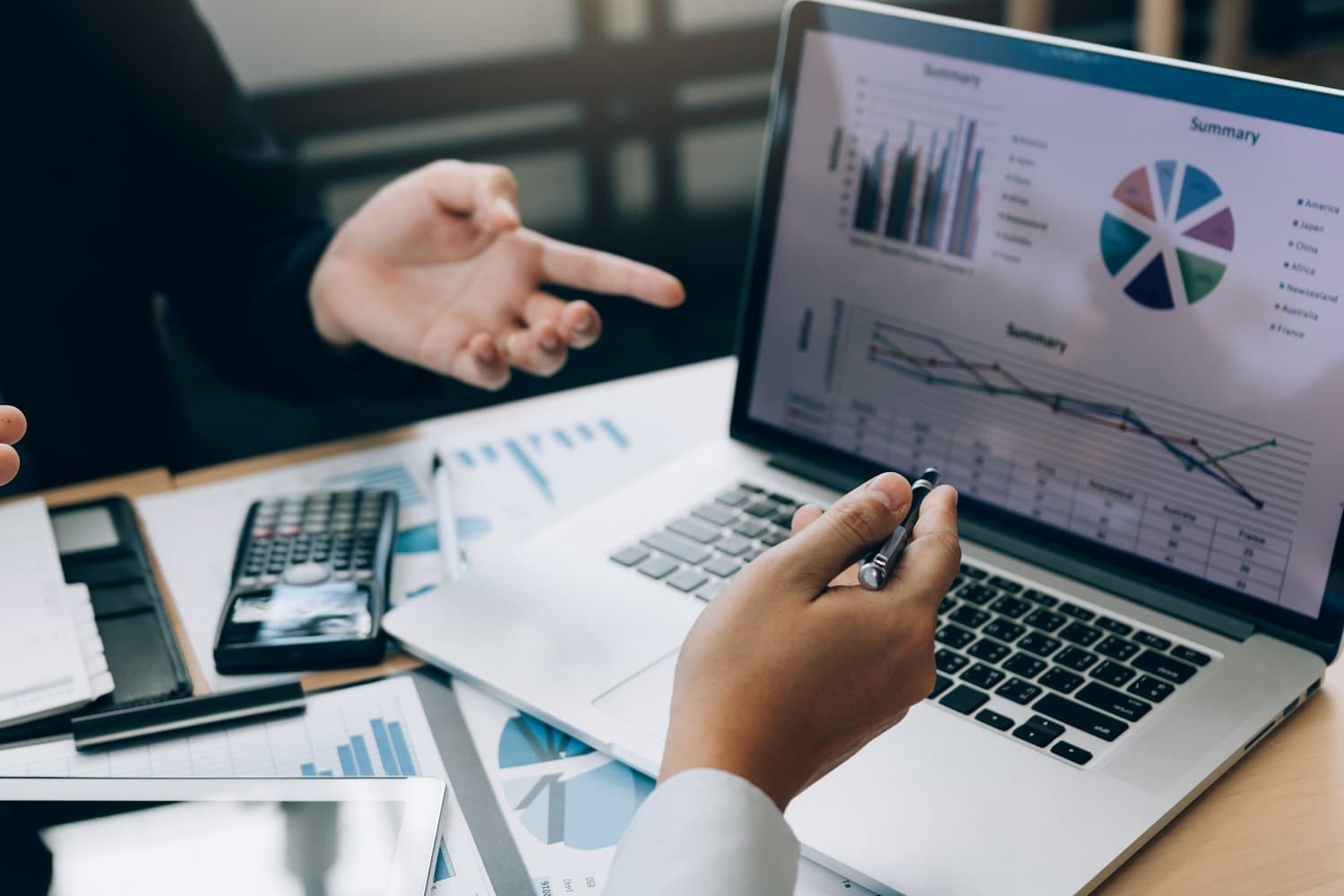Business News Daily provides resources, advice and product reviews to drive business growth. Our mission is to equip business owners with the knowledge and confidence to make informed decisions. As part of that, we recommend products and services for their success.
We collaborate with business-to-business vendors, connecting them with potential buyers. In some cases, we earn commissions when sales are made through our referrals. These financial relationships support our content but do not dictate our recommendations. Our editorial team independently evaluates products based on thousands of hours of research. We are committed to providing trustworthy advice for businesses. Learn more about our full process and see who our partners are here.
Retirement Savings Rules See Big Changes: What You Need to Know
Here’s how the SECURE 2.0 retirement savings legislation package passed in late 2022 benefits employees and employers ― and how employers must comply.

Table of Contents
At the end of last year, the employee retirement plan legislation package known as SECURE 2.0 was signed into federal law. While employee retirement experts have near-universally praised this legislation, it does include more than enough provisions to initially overwhelm small business owners. You might be asking: What steps does your business need to take to comply with SECURE 2.0 and how does this new legislation benefit your organization and its employees?
The good news is that implementing SECURE 2.0 compliance measures will mostly fall to your employee retirement plan provider, not you. Below is a guide to SECURE 2.0’s key provisions and how to comply, with input from employee retirement plan experts.
What is the overall impact of SECURE 2.0?
SECURE 2.0 — like its predecessor, the SECURE ACT — is designed with small businesses in mind. Its provisions incentivize employers to implement retirement plans and increase the amount of money employees can save for retirement and emergencies. Employee retirement experts generally agree that these provisions will strongly benefit both employers and employees.
“I think both employers and employees should feel excited about SECURE 2.0,” said Edward Gottfried, director of product at Betterment at Work. “There’s a good amount of flexibility that didn’t [previously] exist for employers and employees.”
“We’re really enthusiastic about this bill overall,” said Mike Trabold, director of compliance at Paychex. “[W]e think it’s going to be a really good thing across the board.”
What retirement savings provisions does SECURE 2.0 include?
SECURE 2.0 introduces the following changes to employee retirement plans.
1. Employer tax credit changes
Effectively immediately, SECURE 2.0 introduces a new business tax credit for companies with up to 50 employees. This tax credit is equal to the full administrative cost of implementing an employee retirement plan. Companies with 51 to 100 employees can claim a tax credit of up to $5,000 for 50 percent of this same cost.
Also effective immediately, any company with up to 100 employees can also claim a tax credit for their profit-sharing or 401(k) matching contributions. This tax credit maxes out at $1,000 per employee and decreases in size over five years. These decreases will be larger for employers with between 51 and 100 employees. The exact numbers for these decreases have not yet been published.
SECURE 2.0’s changes to employer tax credits may well be among the provisions to which business owners are paying the most attention.
“We’re getting the most questions on, and we’re providing the most information on, [the tax credits],” Trabold said. “It’s of [huge] interest to businesses.”
2. Emergency savings and withdrawals linked to employee retirement accounts
SECURE 2.0 newly links employee retirement accounts and emergency funds access. This provision will go into effect in 2024 and work as follows:
- Penalty-free emergency withdrawals: SECURE 2.0 will allow employees to make one penalty-free emergency withdrawal per year of up to $1,000. Prior to SECURE 2.0, such withdrawals came with a 10 percent penalty.
- Tax-free emergency withdrawals: SECURE 2.0 also allows employees to eliminate the income tax on their emergency withdrawals if they repay the withdrawal within three years. Should the employee not repay during this period, they would need to wait until the period ends to make additional emergency withdrawals.
- Emergency savings accounts: Employers may add emergency savings accounts within their employees’ retirement plans. Employees may deposit up to $2,500 total into this emergency savings account. These will be Roth accounts, meaning tax is paid on contributions upon deposit rather than withdrawal. All withdrawals will be penalty-free.
- Employer contributions: When employees contribute to their emergency savings accounts, employers can make contributions of equal amounts to the employee’s retirement account. However, employers cannot contribute directly to the employee’s emergency savings account.
According to Trabold, this provision is among the most important within SECURE 2.0.
“The emergency savings [provision] is a really significant aspect of the bill that we think is really, really good,” Trabold said.
He added that, during the early stages of the pandemic, “when a lot of people had some job-related challenges, that ability to get money out [of their retirement plans] but having to pay that penalty, was difficult.”
Trabold said he expects the emergency savings account provision to give employers more latitude in helping their employees. He also emphasized that SECURE 2.0 gives employees newfound independence when it comes to withdrawals.
“[SECURE 2.0] will allow employers to rely on employee self-certification of a hardship or an emergency situation” to withdraw funds, he said. “In the past, you had to get proof that the employee met certain criteria [to make a withdrawal]. Now, the employee can self-certify, which is going to simplify things for an employer plan sponsor.”
3. Employer matching contributions for student loan payments
Starting in 2024, employers can make retirement plan contributions every time an employee makes a student loan payment. This contribution can be the same amount as the loan payment.
The idea behind this provision is for employees to no longer have to choose between paying off student loans and saving for retirement. With the employer covering retirement contributions, the employee only has to set aside cash for student loans, not retirement too.
SECURE 2.0 is the first American retirement savings law to enable employers to help their employees pay off their student loans. Such a provision has been a common interest among employers for years.
“The thing we’ve heard time and again,” said Gottfried, “is that employers have heard from their employees that they feel like they need to make an either/or decision between keeping on top of their student loan payments or proactively saving for retirement. The ability to work on both those financial goals simultaneously is really exciting.”
4. Automatic employee enrollment and contribution rate changes
Starting in 2025, employers must automatically enroll their employees in any new 401(k) plans or 403(b) plans they open. Here’s how this portion of SECURE 2.0 will work when it goes into effect:
- Employee opt-out: Any employees uninterested in the retirement plan can opt out after their automatic enrollment.
- Employee incentives to remain enrolled: SECURE 2.0 introduces a provision through which employers can offer small financial incentives, such as gift cards, to encourage employee participation.
- No-fee withdrawal period: Employees can withdraw earnings or automatic contributions penalty-free within 90 days of the account’s first contribution.
- Exemptions: Employers exempt from these requirements include those with up to 10 employees or those under three years in business.
Additionally, the default employer contribution rate for newly opened plans must start at between 3 percent and 10 percent. It must then increase by 1 percent annually until the contribution rate reaches between 10 percent and 15 percent. The same exemptions apply to this provision and governmental plans and churches are also exempt.
5. Employee eligibility changes
Prior to SECURE 2.0, employers were required to allow part-time employees to participate in retirement plans after three years of working for the employer. SECURE 2.0 lowers this time to two years as of 2025. Employees must also work at least 500 hours per year to qualify. However, employees whom the government classifies as “nonresident aliens” and employees participating in collectively bargained plans do not qualify.
6. Federal employee contribution matching
Currently, the Saver’s Credit can reduce the tax burden for retirement plan participants who earn up to $36,500 per year. Starting in 2027, SECURE 2.0 will replace this credit with the Saver’s Match. =
Through this match, the federal government will match up to $2,000 of a low-income employee’s retirement plan contributions. This government match will be at most 50 percent of the employee’s own contributions. The income brackets to which this provision applies have not yet been published.
7. Changes to required minimum distributions
SECURE 2.0 immediately increases the age at which employees must take required minimum distributions from their retirement account. This age was previously 72 and is now 73 and, in 2033, it will increase to 75. This can prove helpful for older employees since traditional (non-Roth) distributions are taxed. Fewer years of required withdrawals mean fewer years of taxation.
SECURE 2.0 also decreases the penalty for not taking a required distribution to 25 percent from its prior 50%. If this is corrected within two years, the penalty falls to 10 percent.
8. Changes to employee catch-up contributions
In 2025, SECURE 2.0 will increase the maximum allowed retirement plan catch-up contribution to $10,000 per year for employees ages 60 to 63. The corresponding amount for employees ages 50 to 59 is $7,500. In 2024, SECURE 2.0 will also require catch-up contributions from employees with incomes of greater than $145,000 to be made as Roth contributions.
9. Roth employer matching contributions
Under SECURE 2.0, employees can choose for their employer to make Roth matching and nonelective contributions to their retirement accounts. This provision only covers contributions that are fully vested (that the employee fully owns). It goes into effect immediately.
“One of the provisions within SECURE 2.0,” Gottfried explained, “would allow an individual employee to elect that their employer match, instead of going into that traditional 401(k) pretax source, would go into a Roth 401(k), which is a post-tax source. The employer can determine whether or not their employees have that option. Then, employees, on a per-employee basis, could elect to say, ‘I want my employer match to be directed into this Roth source,’ and therefore get that post-tax treatment instead of being pretax.”
What steps do you need to take to comply with SECURE 2.0?
Given the breadth of provisions that SECURE 2.0 entails, making all the required compliance changes could seem like a lot of work. Gottfried and Trabold both emphasized that nearly all of this burden falls on your employee retirement plan provider.
“A lot of the requirements that have gone into effect immediately are incumbent on [your] retirement plan provider,” Gottfried said. “Employees should be expecting their retirement plan providers to be giving them materials that help them educate their employees about what changes there might be.”
“If you’re not familiar with how your retirement plan is constructed currently,” Gottfried added, “the best thing to do is ask your retirement plan provider, ‘What is this and what have you done to help support my organization with this legislation? What changes do I need to make or what documents might I need to sign, to take advantage of the new provisions?’”
Trabold added that the introduction of SECURE 2.0 could be a smart occasion to find the right 401(k) plan for your team.
“A lot of it is building a relationship with a provider that you’re comfortable with and can have a dialogue with and [that] can understand the entirety of your business,” Trabold said. “As these different aspects [of SECURE 2.0] evolve and features that are going to be attractive begin to materialize, just being aware of that, having an idea what that timeframe looks like over the longer term, is the right perspective for a business to have.”
“We’re telling our clients to get acquainted with the different provisions but recognize that a lot of them won’t become effective for several years,” he added.
SECURE 2.0 is a plus for both employers and employees
SECURE 2.0 is certainly vast, but not in ways that present any immediate cause for employee or employer concern. The only immediately necessary step is to ask your retirement plan provider how they’ll ensure your compliance as each provision takes effect.
Once your provider puts all your SECURE 2.0 compliance into place, you’ll be able to support employees in all kinds of new ways. You’ll also get to take expanded tax credits and use the money you save to further fund your employee benefits packages. The result will more than likely improve work conditions — and life conditions — for both your business and your team.




